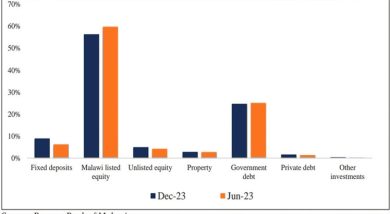Doubts hang over Comesa Customs Union creation
 There is a cloud of uncertainty hanging over the creation of the Common Market for Eastern and Southern Africa (Comesa) Customs Union expected in June this year but nothing much has been done.
There is a cloud of uncertainty hanging over the creation of the Common Market for Eastern and Southern Africa (Comesa) Customs Union expected in June this year but nothing much has been done.
The union was launched in June 2009 at Victoria Falls in Zimbabwe where Comesa heads of State unanimously agreed to provide for a three-year transition period before the body was formed in June 2012.
But Business News has learnt that despite the expiry of the deadline, most countries are yet to implement some key instruments for the union such as Comesa common tariff nomenclature (CTN), tariff alignment schedules towards the Comesa external tariff (CET), national programmes on domestication of the customs management regulations and procedures within the customs union, among other things.
Last week, the Ministry of Industry and Trade confirmed that there is a lot of ground work that needs to be done before the union dream comes true.
“As we are talking, a lot of countries are yet to implement instruments agreed upon in 2009 at Victoria Falls in Zimbabwe.
“It is likely the transition period will be extended to another two or three years,†said Ministry of Industry and Trade spokesperson Wiskes Nkombezi.
He added that most member states have not even sent to Comesa a tentative list of sensitive products which is regarded as one key precondition or instrument to create a customs union.
The Times of Zambia recently quoted that country’s Commerce, Trade and Industry Minister Robert Sichinga as saying it is clear that most Comesa member states are not ready to convert from the free trade area (FTA) to a customs union.
Sichinga noted that the region is facing a lot of challenges that need to be resolved such as high levels of unemployment, lack of value-addition to products, tariff and non-tariff trade barriers before a customs union is formed.
“We need to find out why most members are not ready to transform from FTA to a customs union. Is it not good for our economies?
“Let us face these fears and iron them out. Let the yes, be yes and the no, be no,â€Â Sichinga told the Comesa fourth extra ordinary meeting of the council of ministers held in Lusaka on October 4 2012.
He said it was sad to learn that intra trade within the region stood at 11.2 percent, a situation he said member states should fight if the region is to develop. Â
Added Sichinga: “The region is also experiencing poor infrastructure and in most cases, we depend on the people that are utilising our resources to even build simple things such as toilets.â€
A recent 14th meeting of the Comesa Bureau, which took place recently in Addis Ababa, Ethiopia noted that despite all hiccups, Malawi has made some significant strides in preparing for the establishment of the union.Â
At a Comesa Bureau meeting in Ethiopia, it was noted that Malawi had submitted a list of sensitive and excluded products to the regional body’s secretariat.
During the meeting, Comesa also noted that Malawi Revenue Authority (MRA) is working on other customs-related aspects of the transition period to ensure that Malawi is on track.
Minister of Industry and Trade John Bande, who attended the Comesa Bureau meeting, confirmed the praise that was heaped on Malawi.
 Bande said there is strong will from Capital Hill as regards matters of regional integration.
“We have been commended in so many ways and not only on progress on the Comesa Customs Union. As Comesa chair [ Malawi ], we want to be exemplary and practical on issues of economic integration,†said Bande.
At regional level, Malawi is a member of both Sadc and Comesa.
After attaining FTA in 2000, the region is in the process of operationalising the customs union. Â
Following the liberalisation of trade in the region, intra-Comesa trade has risen from US$3 billion to $17.3 billion from 2000 to 2010, respectively.





